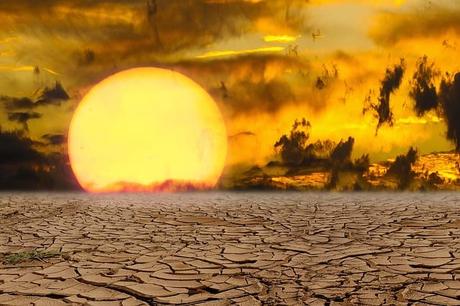Heatwaves batter the Arctic and swell the melting of the frozen edges of the northern hemisphere to a near-record rate as glaciers retreat on Greenland fjords and Alpine peaks, and forest fires rip through Siberia.
The ice sheets that remained solid throughout the year now started melting because of unusually high temperatures according to glaciologists, and they warn this is both intensifying cause and effect of human-made climate disruption worldwide.

Last month, Greenland’s ice sheet, second biggest in the world was likely to have shrunk more than the whole year average between 2002 and now, as per the provisional estimates from satellite data. According to Ruth Mottram of the Danish Meteorological Institute, surface ice declined in July by 197 gigatonnes, equivalent to about 80m Olympic swimming pools. Additionally, one-third of that amount has been possibly lost from glaciers and icebergs.
The trend is gaining momentum. Wednesday was the biggest single-day melt-off of the year so far. “This was one of the highest ever, and it is possible today [Thursday] will be even bigger because the heatwave is continuing,” said Mottram.
Considering ice loss in Greenland, 2019 is already one of the top 10 years and more than a month of the melt season is yet to go. The extent is improbable to beat the 2012 record; however, according to Luke Trusel, an assistant professor of geography at Penn State University, the strength of the melt was greater.
This week, temperatures have been 10C and even more than usual. It is sporadic that yesterday the temperatures were at or above the freezing level for 10 hours even at the summit of the ice sheet, located at 3,200 meters above sea level, Luke said. The ice core analysis has shown that the runoff at these levels usually expected only once every century, possibly even every millennium.
“What was highly unusual in the recent past is becoming the new normal. The Arctic is far more sensitive to warming now than even a few decades ago,” Trusel said.
The giant Petermann glacier is calving faster due to the high temperatures, and in recent years at least two huge cracks have been identified there. However, in the next few years, the giant chunks of ice, several kilometers in length will probably collapse into the ocean. The corresponding impact on sea level is yet to calculate.
The government of Russia delayed in declaring a state of emergency in four Siberian regions and reportedly sent troops to help extinguish forest fires that torn through an area equal to the size of Belgium.
Henceforth several locations recorded high temperatures. Last weekend, Norway registered its joint hottest day ever. In the north of the country, there were “tropical nights,” with temperatures above 20C from dusk until dawn in more than 20 areas.
As the Canadian Arctic is warming two times faster than the global average, the locals have suffered record wildfires, and the melting of permafrost is occurring decades ahead of predictions. Nunavut, the far northern community of Alert, registered a record-high of 21C last month, which according to a local meteorologist had never been seen that close to the pole.
The impact of warming falls on European mountains too. The slopes below the 4,480-metre peak of Matterhorn are increasingly prone to avalanches and landslides due to the warming of the ice-core, authorities warned. High-altitude lakes of meltwater have also been reported in France’s Mont Blanc mountain range.
It poses a severe threat to alpine glaciers in Switzerland that more regions are using giant fleece blankets to try to insulate the ice from the hot air. During the two recent heatwaves, the glaciers in the country lost about 0.8bn tons of snow and ice, according to glaciologist Matthias Huss.
“Absolutely exceptional for a period of only 14 days in total!” Huss said on Twitter. “And the summer is not yet over.”

